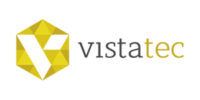How to Create Multilingual Content for Better Global Communication
It’s no secret that English dominates the web. Yet, speakers of the language represent just 26% of internet users. And as the number of people online continues to rise worldwide, the percentage of English-speaking users will likely decline. That means multilingual content is more important than ever.
What Is Multilingual Content?
In web design, multilingual content means serving different languages with different versions of the same website. The process starts by building a website in one language, typically in English or the dominant language, often driven by the organization headquarters. Then the content is translated into one or more languages for different versions of the website.
Everything on the original website is translated, including:
- Navigation bars
- Metadata
- Alt text
- Icons
- Sign up and contact forms
- Pop-ups
- Terms and conditions
In some cases, it involves creating new content to appeal to the target audience or comply with regional regulations. Multilingual content may also include adapting images, videos, and other multimedia components of a website.
Why Create Multilingual Content?
Multilingual content makes your website accessible to people who speak a different language. However, creating it can be lengthy and requires a more significant investment in web development. So, you may be wondering how crucial multilingual content is for reaching a new target market.
If you plan to launch in another region, it offers a significant payoff. That’s because people prefer to read and buy in their own language. According to CSA Research, around 72% of internet users were more likely to buy online if the information was available in their native tongue.
Multilingual content also gives you an edge in new markets through the power of SEO. Multilingual SEO allows you to rank in other languages and regions by serving content to the right audience at the right time.
As for internal markets, multilingual content makes your website more inclusive of people who speak another language in your country. For example, 13% of U.S. residents speak Spanish at home, many of whom prefer content in their native language.
How to Translate Multilingual Content
Once you decide which language(s) to launch your website in, the next step is to determine the best translation method. Technology has made translation more manageable and more affordable than ever, but not every technique is appropriate for every type of content. Let’s take a look at four different methods and how each of them performs.
Machine Translation (MT)
Machine translation is an automated method performed by a computer. Using algorithms, it provides text translations without human involvement. The algorithm “reads” the written content and translates it. Google Translate is likely the most famous example of MT, but many language service providers offer more advanced machine translation tools.
MT offers a fast, affordable way to translate large volumes of content. It works well for documents, instruction manuals, customer service materials, and user-generated content. However, it’s less accurate than manual translation, especially for less commonly spoken languages. It’s also less likely to understand the nuances involved in creative writing, such as
Automatic Translation
Automatic translation includes machine translation but isn’t limited to it. It involves content translation, managing content, optimizing for SEO, localization, and publishing. Unlike MT, this type of translation may include adding a plugin to your content management system. The plugin may have additional features such as translation memory, translation glossary, and editing tools.
Similar to MT, automatic translation can translate large volumes of content quickly and affordably. It also manages other aspects of the website localization process, which reduces turnaround time. Although it offers more features than MT, it still has a lower accuracy rate than manual translation and may miss the nuances of a language.
Real-time Translation
Real-time translation is similar to MT, but it recognizes images of text and translates them. For example, you can upload a picture of a stop sign to a real-time translation app, and it will translate the word “stop.”
It works well when you need an immediate translation of a document, web page, menu, or other images with text. While it’s quick and affordable, it may provide a rougher translation than other methods. It also has difficulty reading handwriting.
Manual Translation
Manual translation involves a human translator or team of human translations with native-level expertise in both the source and target languages. They also have a deep knowledge of the target culture and country.
Manual translation works well for creative projects such as marketing, design, and literature. Unlike translation technology, manual translators have a more nuanced understanding of language and can adapt cultural references. They’re also the most accurate. However, manual translation is more expensive and has a longer turn-around time.
Why Manual Translation Is Your Best Bet
While other methods have their uses, manual translation works best for linguistically and culturally nuanced projects such as websites. That’s because human translators not only ensure accuracy but that the content sounds natural.
Although machine-generated translations may be grammatically correct, they often sound like translations. Not only that, some content may need to be re-written to convey the same message. This process is called transcreation, and only human translators can do it.
Space limitations pose another challenge for website translation. The target language may take up more (or less) space than the source language, which requires the translator to make difficult editorial choices. A machine-generated translation may be programmed to fit the space available, but the text may be far from how a native speaker would word it.
Lastly, manual translators can provide guidance that machine translation can’t. That includes recommendations for additional content pages or the best way to structure the content for the target market.
Manual translation will take longer and may cost more than other methods. However, it’s the best way to ensure you create content that seems as natural as the original.
Ready to discuss your next multilingual content project? Contact Vistatec today.
About Vistatec
We have been helping some of the world’s most iconic brands to optimize their global commercial potential since 1997. Vistatec is one of the world’s leading global content solutions providers. HQ in Dublin, Ireland, with offices in Mountain View, California, USA.

